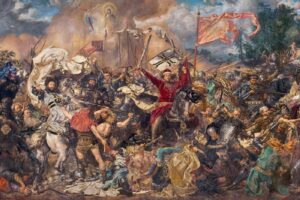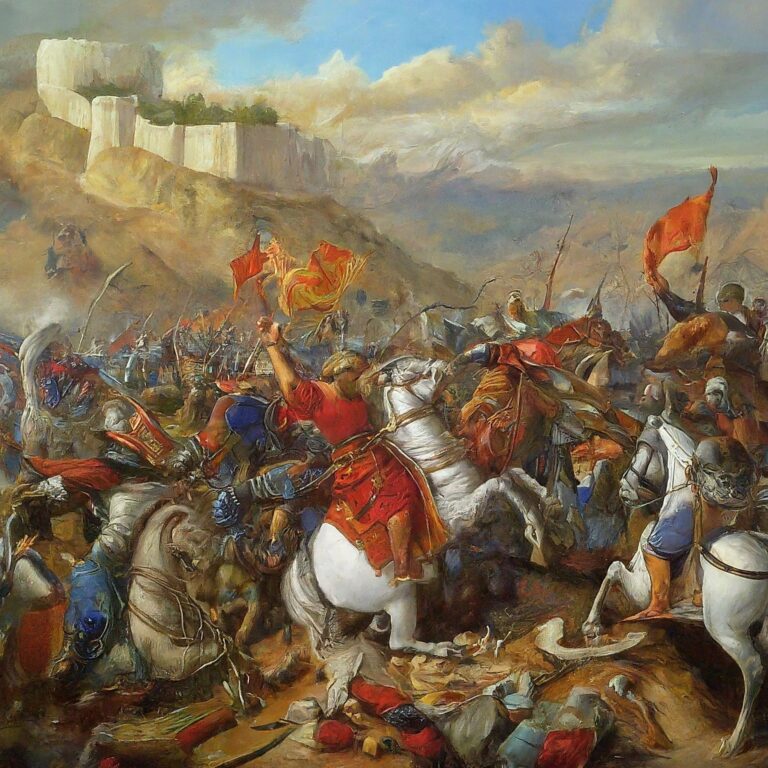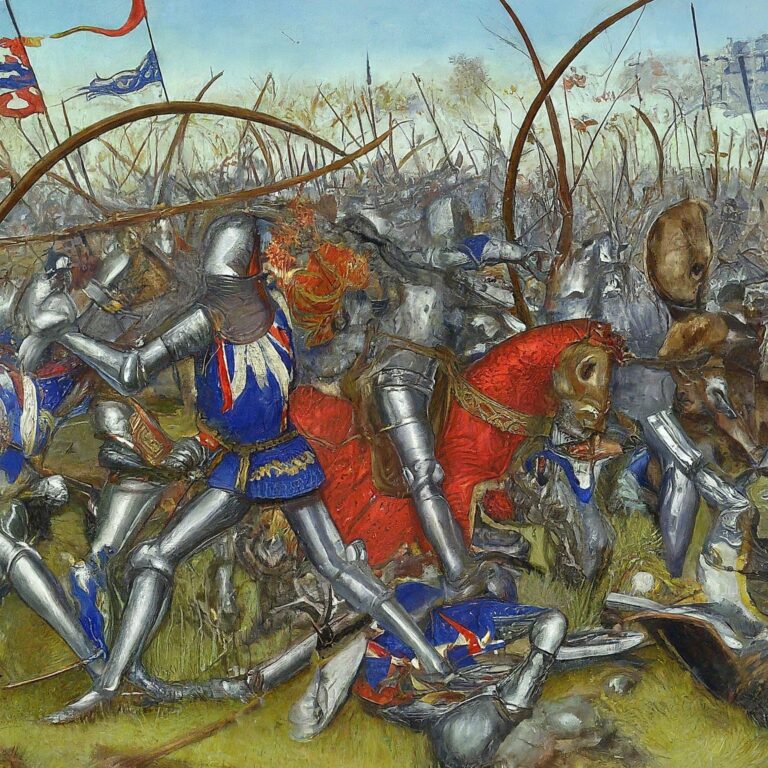The Battle of Hastings, fought on October 14, 1066 CE, was a landmark event in English history. It resulted in the Norman conquest of England and established William the Conqueror as King of England. The battle took place near Hastings, on the south coast of England, and was fought between the Norman forces of Duke William of Normandy and the Anglo-Saxon army led by King Harold II.
Following the death of King Edward the Confessor, the English throne was claimed by several contenders, including Harold and William. Harold was crowned king, but William, who claimed that Edward had promised him the throne, launched an invasion of England to press his claim.
William’s forces landed in southern England, and Harold, who had just repelled a Norwegian invasion in the north, rushed south to meet him. The two armies met at Senlac Hill, near Hastings. Harold’s army, composed mainly of infantry, formed a shield wall on the hilltop, a strong defensive position. William’s army, which included infantry, archers, and cavalry, repeatedly attacked the English line, but the shield wall held.
After several failed attacks, William employed a feigned retreat, a tactic that tricked parts of the English army into breaking their formation to pursue the Normans. This opened gaps in the English defense, allowing the Norman cavalry to penetrate the lines. In the chaos, Harold was killed—legend says by an arrow to the eye—leading to the collapse of the Anglo-Saxon army.
The Battle of Hastings was a decisive Norman victory. William was crowned King of England on Christmas Day 1066, and the Norman conquest fundamentally changed the social, political, and cultural landscape of England. Norman French became the language of the ruling class, and the feudal system was introduced, reshaping English society for centuries to come.



